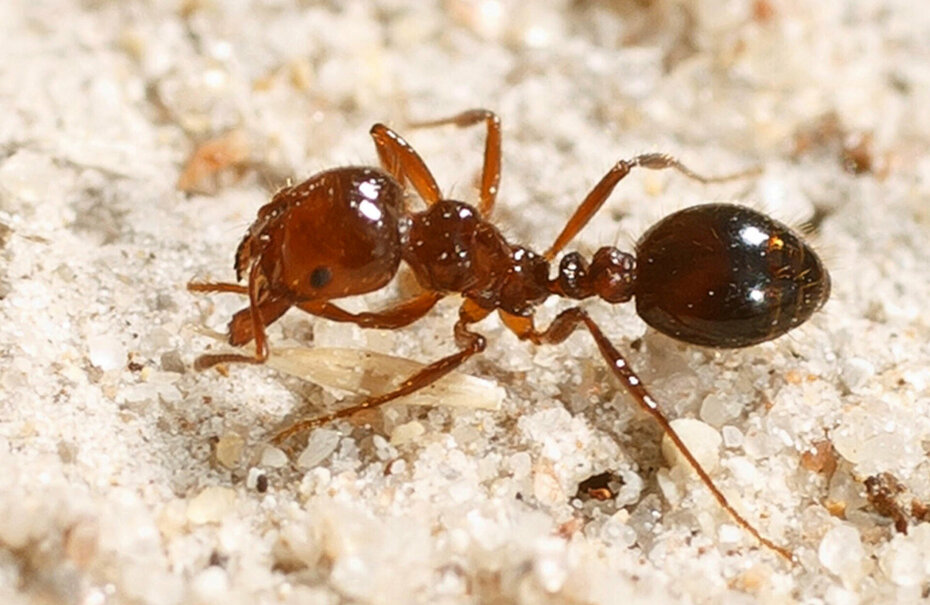Originally from South America, these invasive pests have reached Brisbane and recently Oakey, causing havoc wherever they go. But why are fire ants such a big deal, and what can we do to stop them in their tracks?
The Fire Ant Problem
Fire ants aren't just annoying; they could become Australia's worst pest. They're mean biters and can sting many times, leaving painful blisters. Their nests are especially dangerous for kids and pets in parks and yards who might not know to avoid them. Moreover, their presence poses a significant threat to agriculture, as they are known to cause substantial damage to crops and livestock.
What Do Fire Ants Look Like?
Identifying fire ants is crucial for early detection and control efforts. These dark, reddish-brown insects are small, ranging from 2-6mm. Their shiny, segmented bodies, distinctive bent antennae, and darker abdomen make them easy to distinguish from other ant species.
How Do Fire Ants Survive and Thrive?
Fire ants are masters of adaptation and spreading. They can travel both above and below ground and astonishingly, they can even fly up to 5 kilometres. After floods or heavy rain, they're known to create rafts on water. They prefer nesting in various environments such as soil, hay bales, mulch, manure, turf, and potted plants. The relocation of just one fire ant queen is all it takes to disperse the entire colony. Their complex social structure, rapid reproduction rates, and aggressive foraging behaviour enable them to establish expansive colonies and outcompete native species for resources.
The Potential Impact of Fire Ants
Make no mistake - fire ants are not to be underestimated. With the potential to surpass the combined damage caused by feral cats, wild dogs, foxes, camels, rabbits, and cane toads, fire ants pose a significant threat to our economy, biodiversity, and way of life.
What Can You Do?
Stay Vigilant: Keep an eye out for dirt mounds, which are the primary indication of an imported fire ant infestation. These mounds are typically found in open, sunny areas like lawns, pastures, parks, and playgrounds. They resemble piles of aerated soil, lacking an opening at the top. Red imported fire ants use a network of tunnels and holes surrounding the mound to access their underground nest.
Scope it Out: If your infestation involves a multiple-queen colony, there could be numerous other mounds scattered around your yard. Take the time to survey your property to pinpoint their locations and assess the level of risk. Proceed cautiously, wearing closed-toe shoes to avoid accidental encounters with fire ant tunnels.
Stay Away: Remember that a fire ant colony extends far beyond the visible mound on your lawn. When threatened, fire ants swarm out of underground tunnels to defend their nest. If you spot a dirt mound, maintain a safe distance, and ensure your family members and pets stay clear as well.
Take Action: Should you suspect fire ants on your property, don't hesitate to capture a photo and contact CDI Pest immediately. Our expert technicians are equipped to identify and effectively treat fire ant infestations, ensuring a swift and responsible response.
Cooperate with Authorities: If you reside outside the containment area, it's essential to inform the Department of Primary Industries (DPI) to aid in the tracking and management of fire ant infestations.
Don't Delay: Time is of the essence in addressing fire ant infestations. Early intervention is critical to containing their spread and minimizing their impact on our communities. Reach out to CDI Pest without delay to safeguard your property and community from the threat of fire ants.
How CDI Pest Can Help
At CDI Pest, we're dedicated to protecting our communities from the threat of fire ants. Our expert technicians are trained to identify, notify DPI, and treat fire ant infestations effectively and responsibly. Don't wait until it's too late - contact us today to safeguard your property and community from the fire ant invasion.
Together, we can take action to combat this formidable foe and preserve the beauty and biodiversity of our beloved Toowoomba and Brisbane communities and beyond.








